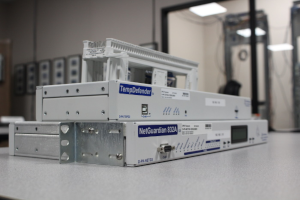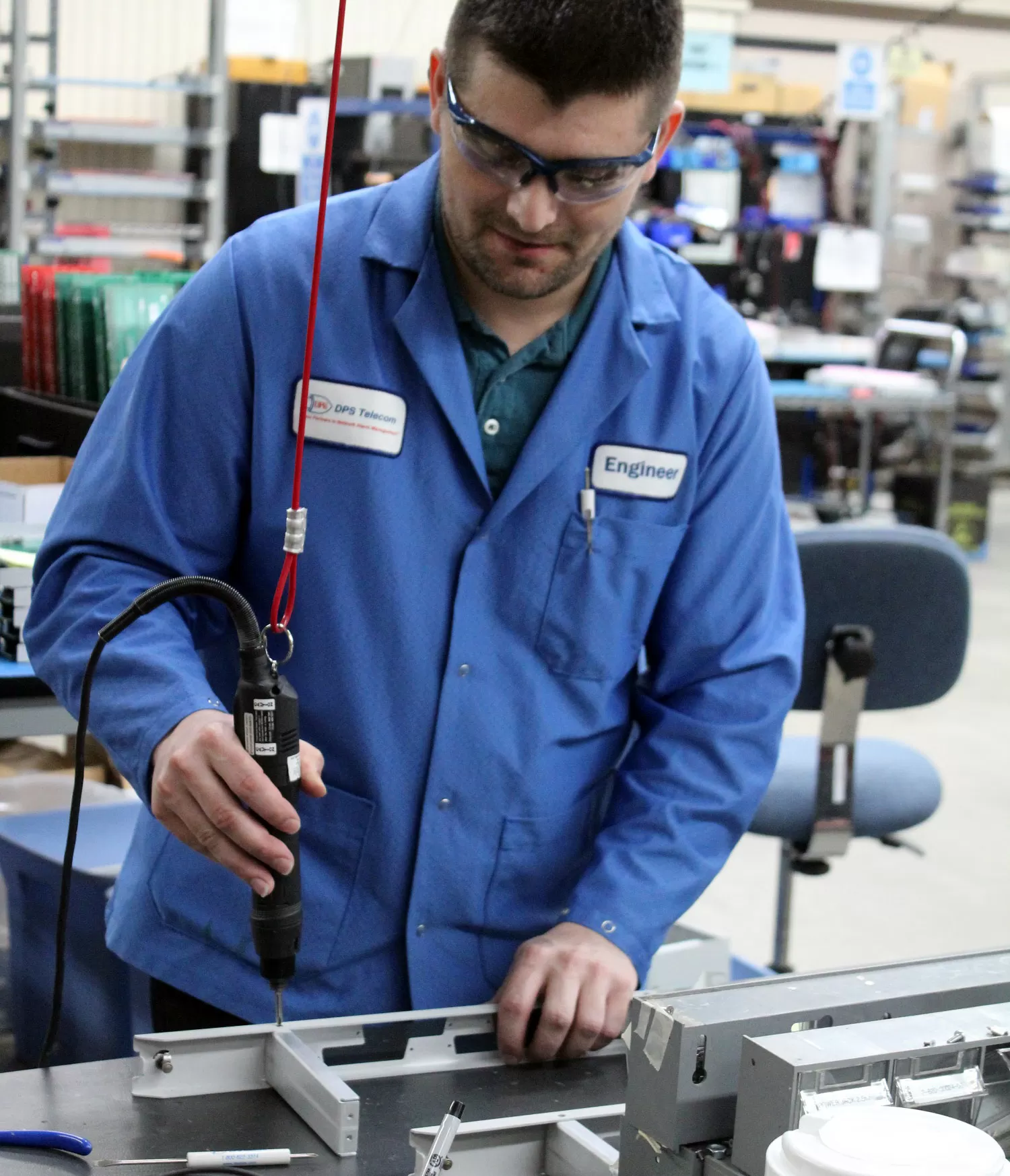Check out our White Paper Series!
A complete library of helpful advice and survival guides for every aspect of system monitoring and control.
1-800-693-0351
Have a specific question? Ask our team of expert engineers and get a specific answer!
Sign up for the next DPS Factory Training!

Whether you're new to our equipment or you've used it for years, DPS factory training is the best way to get more from your monitoring.
Reserve Your Seat TodayIf you've been managing remote monitoring equipment for a while, you already know the frustration of "forced obsolescence." This situation happens when a manufacturer - often quite blatantly - phases out perfectly good hardware or stops supporting older models.
Suddenly, you're stuck with a choice you never wanted to make: either keep running outdated gear at your own risk or shell out major capital for brand-new units on their timetable.
This practice is common enough in technology that many people simply expect it. But the truth is, forced obsolescence doesn't have to be the norm.

At DPS Telecom, we reject the notion that customers should have to replace equipment before they're ready. Our remote telemetry units (RTUs) are designed to serve you for as long as possible. By doing so, we help you avoid the unpleasant - and costly - cycle of "rip and replace" that plagues so many industries.
That said, technology does evolve. New security protocols develop, old standards get superseded, and industry requirements move forward. These changes can make truly ancient devices vulnerable or underpowered.
Sometimes, it isn't enough to simply update the firmware on older units. Eventually, you may need new hardware - but not because we've artificially forced it. We only recommend upgrading when it makes practical, financial, and operational sense for you.
The end result? No forced obsolescence - just smart evolution. Let's dive into why that's our philosophy, how it plays out, and why you might need new hardware instead of just a firmware update.
It's a fair question - and one we hear from prospective clients and long-time users alike. Firmware upgrades are incredibly useful for extending the life of your RTUs. They're especially helpful when you want to fix minor bugs or add modest new features.
That's why DPS provides free lifetime firmware upgrades for all RTUs, helping you extend the life and performance of your equipment at no extra cost. These upgrades let you meet new requirements, improve security, and fix software issues - without having to replace your hardware early.
Unfortunately, firmware isn't a magic wand. Sometimes it can't get you to where you need to be if the underlying hardware isn't capable of handling the new demands.
We often say "firmware can't magically add new hardware capacity," but that only scratches the surface. Here's a more detailed look at why firmware updates have inherent limits:
As much as we love helping our clients extend the life of their RTUs, it's crucial to recognize hardware limitations. We don't want to promise that a simple firmware patch will keep you 100% secure or 100% compliant when that isn't possible without a hardware upgrade.
Imagine you purchased a NetGuardian 420 RTU between 2008 and 2022. That model used a processor from around 2008. At the time, strong HTTPS and TLS 1.2 encryption were not industry-wide requirements. Encryption demands were far more relaxed, and many clients considered simple password protection to be adequate.
Flash-forward to 2025: security threats have multiplied and encryption has become even stronger. TLS 1.2 - or even TLS 1.3 - is now the absolute minimum standard for securely managing remote devices.
All that added encryption overhead requires more processing horsepower and newer cryptographic instruction sets. A firmware upgrade alone can't give an older CPU that extra muscle. The result? Your older RTU can't keep up with the latest protocols.
That's precisely why DPS introduced our G6 NetGuardian RTU family in 2022. These units come with modern processors capable of supporting new security features, advanced management protocols, and higher data throughput. We also continuously refine the design to maximize service life. By rolling out upgrades when they genuinely matter, we help you stay ahead of security issues and protocol changes - without any nonsense about forced replacement.
It's easy for a manufacturer to say they believe in extended product life. But how many back that up with real-world examples? At DPS, we live this philosophy:
This approach is about protecting your investment. We recognize that large-scale network overhauls are far from ideal. Even if you want to upgrade to the latest RTU generation, you might need time to budget, test, and plan.
By supporting older models for as long as possible, we let you decide when it's time to move on. This way you can upgrade based on your operational needs rather than an arbitrary timeline we set.
Support doesn't just mean we'll answer your calls. It means we maintain documentation, keep essential components in stock, and continue to provide firmware updates (where feasible) for older units. We don't believe in cutting you off as soon as a shiny new product is released. That might be a way to force new sales, but it's not how you build long-term relationships.
Let's say you have a group of older RTUs - some G3s, maybe some early G5s - that have served you well for a decade. You're hearing about new security requirements, but the idea of replacing every single unit in one shot makes your budget manager sweat. Or maybe you just don't have the time or labor resources to roll out a massive, single-sweep upgrade without risking some downtime.
When it is time to finally upgrade, it's easier with DPS RTUs thanks to their "pin-compatible" design. DPS engineers ensure new RTU models keep as many connectors as possible from the previous versions.
This means that swapping an old unit for a new one often requires minimal rewiring, cutting down on labor and time. By maintaining connector consistency, DPS makes upgrades smoother and less disruptive, letting you modernize without major monitoring downtime or expensive labor hours.
One of the most frustrating things about forced obsolescence is the financial hit. You might have spent thousands (or tens of thousands) on an RTU that the manufacturer suddenly decides is obsolete. They refuse to support it, and you're left with an expensive paperweight.
DPS takes a different approach:
If you've ever had to write off expensive equipment just because it was "no longer supported," you'll understand how big of a deal this is. It's a key part of our promise: no forced obsolescence - just a practical, cost-effective path forward.
Many manufacturers force customers into a costly "rip and replace" cycle by abruptly ending support for older gear. That approach creates a near-instant wave of demand for whatever the new product is. This is at the direct expense of customers who have to scramble to rework their networks.
DPS takes pride in not doing that:
For many organizations, the worst part of forced obsolescence isn't even the capital expense. It's the potential downtime, the staff time, the retraining, and the risk of messing something up during a hasty change-out.
By offering a more controlled upgrade path, DPS helps you avoid the chain reaction of problems that can arise when you have to tear out your entire monitoring infrastructure on short notice.
The only constant in technology is change. Security protocols, compliance regulations, and communication methods never stand still. What's considered secure and modern today will inevitably become outdated tomorrow.
Instead of leaving you stranded, DPS makes sure each new RTU generation aligns with emerging requirements.
With DPS, you're not forced to buy a brand-new RTU every time a new standard appears. Instead, we try to incorporate support for new protocols in existing hardware wherever possible.
When a major hardware update is required, we do our best to give you plenty of notice and a straightforward path to move up to a new generation at your own pace.
If you're reading this and thinking, "Hmm, maybe it's time I look at my older gear," we'd be happy to help you plan next steps. Whether you just need a firmware refresh, want to move to a new hardware generation, or require a more staggered approach to avoid budget shocks, we're here to guide you.
We'll give you straightforward advice based on your specific needs. We'll help you keep your network running efficiently, securely, and cost-effectively.

Andrew Erickson
Andrew Erickson is an Application Engineer at DPS Telecom, a manufacturer of semi-custom remote alarm monitoring systems based in Fresno, California. Andrew brings more than 18 years of experience building site monitoring solutions, developing intuitive user interfaces and documentation, and opt...